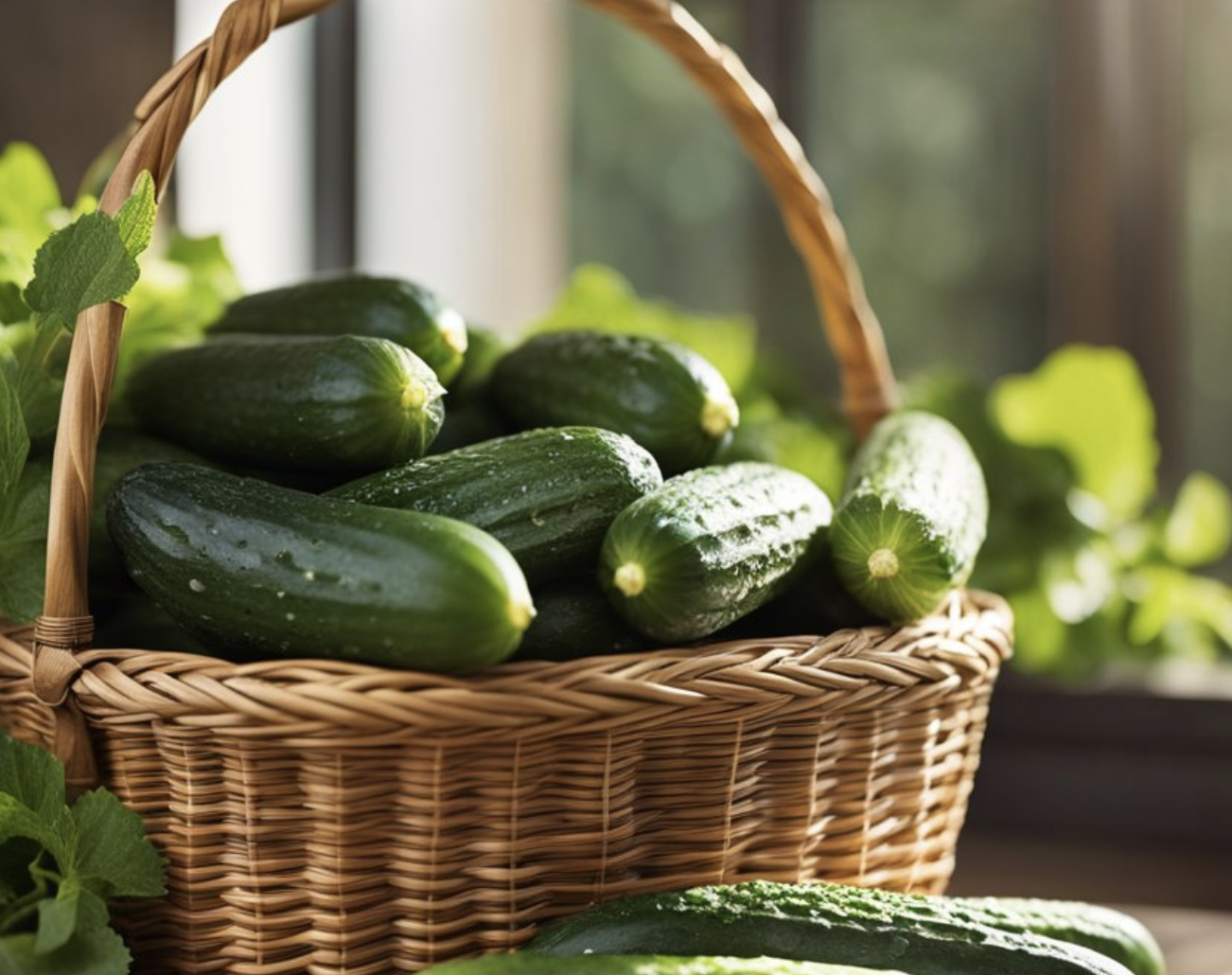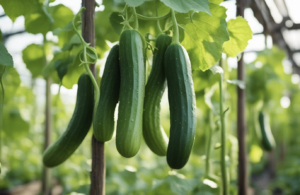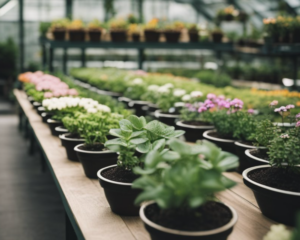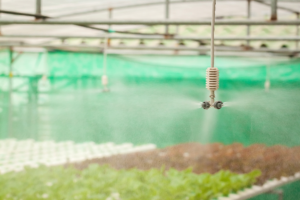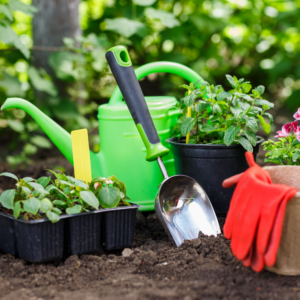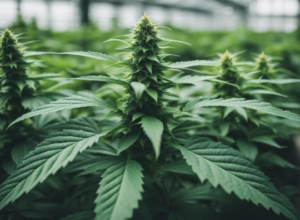Growing cucumbers in a greenhouse offers a bunch of perks. I get to control the environment, which means my cucumbers can dodge the chaos of outdoor weather like early frosts or those scorching summer days. In my greenhouse, cucumber plants thrive in stable temperatures, and I can manage the humidity levels too. This controlled setup leads to a longer growing season, meaning more crunchy cucumbers for my salads and pickling jars.
I’ve noticed that greenhouse cucumbers tend to be pretty consistent in size and shape, thanks to the uniform conditions. They don’t get battered by wind or rain, so they end up looking pretty sleek on the grocery store shelves or in a farmer’s market crate. Plus, growing them in a greenhouse reduces the need for chemical pesticides since many of the pests that love munching on cucumbers are kept at bay.
Caring for greenhouse cucumbers does need a steady hand, though. I have to keep an eye on irrigation, making sure those plants get plenty of water without getting waterlogged. And pollination? Well, in the great outdoors, bees take care of that, but in a greenhouse, I sometimes have to play matchmaker with a small brush or bring in some bumblebee buddies to help out. The vines can get pretty wild too, so training them up trellises is part of the routine. It’s all about balance and knowing the needs of your green darlings.
Greenhouse Setup and Design
When I’m setting up a greenhouse for cucumbers, there are crucial components I focus on to ensure optimal growth. From picking the ideal spot to fine-tuning the environment, I pay attention to each detail.
Choosing the Right Location
I always start by selecting a location that maximizes sunlight exposure, as cucumbers thrive with plenty of light. I ensure the site is shielded from strong winds but gets ample morning sun, which warms the soil and spurs growth.
- Optimal sunlight exposure: 6-8 hours of direct sunlight
- Shielded from prevailing winds
Selecting Cucumber Varieties
I choose cucumber varieties suited for a greenhouse setting, like seedless or parthenocarpic varieties which don’t require pollination. I look for disease-resistant types to reduce chemical use.
- Seedless and parthenocarpic varieties: ‘Socrates’, ‘Tyria’
- Disease resistance: a top priority
Greenhouse Environment Fundamentals
I aim for a controlled environment that manages temperature and humidity levels for cucumbers to flourish. A balance between 75-85°F and relative humidity of 50-70% typically works well.
- Temperature range: 75-85°F
- Relative humidity: 50-70%
Implementing an Effective Irrigation System
For watering, my go-to is a drip irrigation setup. This method conserves water, evenly distributes moisture, and maintains ideal soil temperature.
- Drip irrigation: promotes even soil moisture
- Watering schedule: adjust according to cucumber development stage
Lighting and Temperature Control
Grow lights supplement natural light on overcast days. To manage temperature fluctuations, I use shade curtains and ventilation for cooling.
- Additional lighting: helps on cloudy days
- Temperature control: shade curtains, vents
Structures and Trellising
I employ structures like the high-wire system or v-cordon, which support growth and make harvesting easier. A sturdy trellis is fundamental in any greenhouse I set up.
- High-wire system: supports vertical growth
- V-cordon and umbrella system: for horizontal spread
Soil and Growth Mediums
Cucumbers prefer well-draining, nutrient-rich soil. I mix my own with perlite, compost, and garden soil to ensure they get what they need.
- Well-draining soil: prevents waterlogging
- Enrich with compost and perlite: for nutrition and aeration
Greenhouse Tools and Materials
Lastly, I gather essential tools like pruners, ties for trellising, a pH meter for soil testing, and mulching materials to retain soil moisture.
- Regular tools: pruners, ties, pH meter
- Mulching materials: straw, bark chips
Cultivating Cucumber Plants
When I start my cucumber plants in the greenhouse, my focus is on ensuring strong germination, careful transplanting, and effective training. Achieving good pollination is also critical for a bountiful crop.
Preparing for Planting
Before I plant my cucumber seeds, I choose a potting mix rich in organic matter. The pH is essential, and I aim for a range between 5.5 and 6.5 for optimal growth. I soak the seeds overnight to speed up germination, which typically begins in 3-10 days. During this phase, maintaining a consistent temperature between 70-85°F (21-29°C) helps get my seeds off to a good start.
Potting and Transplanting
After seeing those first sprouts, I prepare for transplanting. I fill my pots with the same nutrient-rich soil to avoid transplant shock. I plant the cucumber seedlings 18-36 inches apart to ensure they have enough room to grow. I make sure the greenhouse is set to a cozy temperature between 70-75°F (21-24°C) with good humidity levels to keep those young plants happy.
Training and Pruning Techniques
Training my cucumber plants early is a game-changer. I use trellises to guide their growth upward, which promotes air circulation and reduces disease risk. I’m always gentle when tying the vines. Pruning is straightforward—I remove the lower leaves to improve air flow and pinch off excess cucumber flowers to focus the plant’s energy on fruit production.
Optimizing Pollination
In my greenhouse, I’ve found bees to be the best pollinators for cucumber plants. I introduce them once the plants start flowering. Cucumber plants have separate male and female flowers, so I keep an eye out to make sure bees are visiting both. No bees? No problem. I sometimes hand pollinate by transferring pollen from the male to the female flowers with a small brush.
Maintenance and Growth Management
In maintaining a productive greenhouse cucumber crop, my focus revolves around achieving optimal growth conditions and preventing issues before they arise. Let’s discuss the essential practices from watering to disease management to keep those cucumbers thriving.
Watering and Humidity Regulation
I ensure my cucumbers get consistent watering because uneven water supply can lead to stress and fruit deformities. I maintain humidity levels between 50-70% for optimal growth, using a hygrometer to monitor the levels. Here’s a quick reference for my watering schedule:
- Seedling stage: Water once a day to keep the soil evenly moist.
- Fruiting stage: Increase to twice a day, focusing more on the base of the plants.
Temperature and Climate Control
Cucumbers prefer a warm environment, so I keep the daytime temperature range around 22-28°C and night temperatures not falling below 18°C. It’s crucial to maintain these stable conditions because low temperatures can severely hinder plant growth and fruit quality. I use automatic climate control systems to manage these settings.
Soil Management and Fertilization
Soil health is non-negotiable for me. I perform regular tests to ensure optimal pH and nutrient levels. I use a balanced nutrient solution with every watering once my plants are established. Here’s my fertilization routine:
- N-P-K: I apply a fertilizer with a ratio of 1-1-1 every two weeks.
- Micronutrients: I include trace elements like magnesium and calcium monthly.
Growth Monitoring and Trellising
I support my cucumber plants’ vertical growth with a sturdy trellis system. Not only does it maximize space, but it also promotes better air circulation and eases harvesting. I check on my plants daily for any signs of growth issues and adjust the trellising as needed.
Pest and Disease Management
Pest and disease vigilance is key. I regularly inspect leaves for signs of powdery mildew or the dreaded cucumber mosaic virus. I’ve found that prevention is the best strategy, so I introduce beneficial insects like ladybugs to combat whitefly populations. If I spot trouble, I opt for organic treatment solutions first. Here’s my quick checklist:
- Weekly checks: Inspect leaves and stems.
- Beneficial insects: Introduce as preventive control.
- Organic treatments: Use if pests or diseases are detected.
Harvesting and Post-Harvest
When I’m about to harvest my cucumbers, I know that timing and technique are everything. Doing it right means I can enjoy a rewarding and successful harvest with great yields.
Signs and Timing of Harvest
I look for a few signs on my cucumbers to determine the perfect harvesting time. The skin should be a vibrant green color, firm to the touch, and the size should be aligned with the variety I planted. Typically, harvesting should occur when they reach a usable size and before they start to turn yellow. Regular harvesting actually encourages more fruit production, so I make it a part of my routine, usually when cucumbers are 6 to 8 inches long for slicing varieties, and 1.5 to 2.5 inches for pickling types. Stable conditions without extreme changes in temperature or water supply are ideal for a steady yield.
Harvest Techniques
Harvesting the right way is crucial to avoid plant injuries and ensure continuous yields. I use a clean, sharp knife or pruners, cutting the stem above the fruit. It’s important not to pull or twist cucumbers off the vine, as this could damage both the plant and the fruit. Also, I try to harvest in the morning when temperatures are cooler, which goes a long way in maintaining the quality of the cucumbers.
Post-Harvest Handling and Storage
Once I’ve harvested, proper handling is key to extend the shelf life. I handle them gently to avoid bruising. My cucumbers are then cooled quickly to remove field heat, and I aim for a storage temperature of 50-55°F (10-13°C) with 95% relative humidity. They’re stored away from fruits that produce ethylene, like tomatoes and bananas, as this gas can cause yellowing and deterioration. If I’ve done everything correctly, my cucumbers can stay fresh and crisp for at least 10 to 14 days post-harvest.
Advanced Techniques and Special Topics
In my pursuit of mastering greenhouse cucumber cultivation, I’ve explored some sophisticated strategies. These are not your everyday gardening tips. They’re targeted at overcoming specific challenges and harnessing advanced techniques to boost both yield and quality.
Hydroponic Greenhouse Cucumbers
I must say, hydroponics is a game-changer. No soil? No problem. Instead, I feed my cucumber plants directly with nutrient-rich solutions. It’s like giving them a gourmet meal, and the results are impressive: faster growth and greater yields. Plus, I can say goodbye to most soil-borne diseases.
Challenge of Growing Cucumbers Off-Season
Growing cucumbers in a greenhouse during the off-season challenges even the seasoned gardeners. To avoid frost damage, I maintain the ideal temperature and humidity levels meticulously. Using thermal screens and heating systems, I can coax my cucumbers into thinking it’s always summer.
Maximizing Yield and Quality
I focus on two main factors: plant nutrition and pruning. Ensuring a balanced diet for the plants is crucial, so I regularly test and adjust the nutrient solutions. As for pruning, I carefully remove excess foliage to ensure adequate air circulation and exposure to light, which promotes both fruit quality and yield.
Companion Planting Strategies
I’ve found growing tomatoes alongside my cucumbers to be mutually beneficial. It’s like having friends that help each other grow. The tomatoes deter pests that might otherwise harm the cucumbers, which means I can use fewer chemicals and still maintain a healthy crop.
Innovations in Greenhouse Cucumber Production
I’m always on the lookout for new tech in greenhouse cucumber production. Right now, I’m excited about automated climate control systems that adjust the conditions inside my greenhouse in real-time. This tech ensures that my cucumbers get the ideal environment for growth at all times, making my life much easier.
Frequently Asked Questions
I’ve gathered some common queries regarding greenhouse cucumbers so you can find quick, straightforward answers.
What are some popular varieties of cucumbers for greenhouse cultivation?
I often grow varieties like ‘Beit Alpha’, ‘Diva’, and ‘Tasty Green’ because they are well-suited to the controlled conditions of a greenhouse. These cultivars thrive indoors and produce high-quality fruit.
How can I improve the yield of cucumbers in my greenhouse?
To boost my greenhouse cucumber yield, I focus on providing optimum conditions for growth. This includes consistent temperatures, adequate pollination through bees or manual methods, and balanced fertilization.
What are the best practices for growing cucumbers in pots inside a greenhouse?
When I grow cucumbers in pots, I ensure they have plenty of room for roots in a pot at least 12 inches deep. I use a trellis to support their climbing habit and monitor water needs closely, as potted plants may dry out faster.
Where can I find quality seeds for greenhouse cucumber production?
I source my seeds from reputable suppliers who offer high germination rates and disease-resistant varieties. Local garden centers, seed catalogs, and online retailers are some of the places where I find quality seeds.
Can cucumbers be grown in a greenhouse alongside tomatoes, and how to manage them?
Yes, I have grown cucumbers with tomatoes. It’s key to manage their different climatic needs. I separate them within the greenhouse to provide each with its preferred humidity and temperature levels and prevent disease transmission.
Where is a good place to purchase greenhouse-grown cucumbers?
For the freshest greenhouse-grown cucumbers, I recommend local farmers’ markets or directly from a local greenhouse grower. Some specialty grocery stores also stock cucumbers straight from greenhouses.

